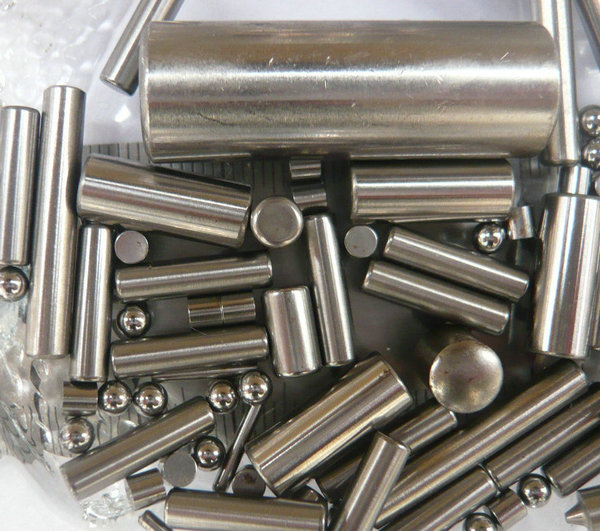
MANUFACTURER of spherical convex/ellipsoid rollers,Supplier of spherical crowned/convex needle rollers in CHINA.


the spherical rollers that are thicker in the middle and thinner at the ends,spherical rollers are difficult to produce and thus expensive.
the bearings have higher friction than a comparable ball bearing since different parts of the spherical rollers run at different speeds on the rounded race and thus there are opposing forces along the bearing/race contact.
In many highly stressed applications the cylindrical roller cannot be “too cylindrical” – otherwise severe edge loading will occur. Perfectly cylindrical surfaces in contact always have higher stresses at the edges. Furthermore, this edge loading can worsen if the roller is slightly misaligned or if the components bend or distort during operation. By putting a tightly controlled “crown” on the roller at the micrometer level, the loading of the bearing can actually be made more consistent over the length of the bearing. The following figures show how different types of surface profiles induce different kinds of contact stresses at low and high loading.


Cylindrical/Spherical Rollers
This type of bearing utilizes cylindrically shaped rollers as the load carrying element. This bearing type is designed to carry large radial loads. This bearing, in its basic configuration, is not well suited to counter axial loads. The rollers may actually be slightly barrel shaped in certain designs. Barrel shaped rollers and their associated outer race allow for some self alignment of the bearing. Needle bearings are a special adaptation of the cylindrical roller bearing.
manufacturer and supplier of spherical rollers


precision cylindrical rollers have multiple uses in a variety of industries including automotive, textile and electrical equipments. they are mainly used as bearing rolling elements to transmit torque and reduce friction.
we are manufactured precision rollers psrts. including cylindrical rollers,spherical rollers, needle rollers, tapered rollers, cuspidal ends rolles, arc correction line rollers, logarithm profile rollers etc. we will provide you quality needle roller with competitive price and excellent service.
- home
- products
- contact
- equipments
- balls or valves
- ball bearings
- face driver pins
- needle rollers
- standard sizes or stocks
- needle roller bearings
- cylindrical rollers
- cylindrical roller bearings
- tapered rollers
- tapered roller bearings
- spherical rollers
- spherical roller bearings
- ceramic rollers
- Si3N4 rollers
- ZrO2 rollers
- miniature bearings
- dental bearings
- slewing bearings
- combined bearings
- clutches CK series